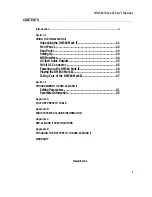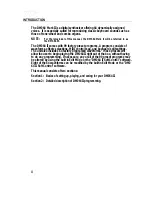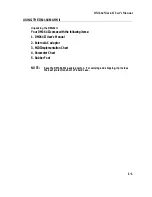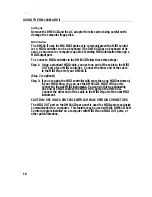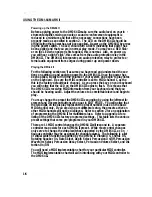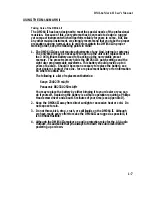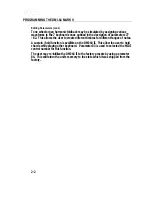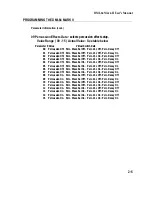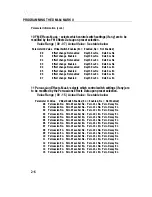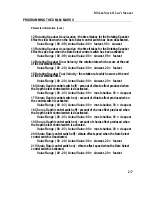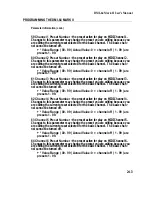
USING THE DMI-64 MARK II
Powering up the DMI-64 II
Before applying power to the DMI-64 II make sure the audio level on your in -
strument amplifier, mixing console or sound re-enforcement equipment is
reduced to a minimum and that all the necessary connections have been
properly made as specified in section 2. The LED on the DMI-64 II should be
off indicating that power has not been applied. Power up the DMI-64 II by press
-
ing the power switch. The LED should turn GREEN indicating that power has
been applied and that you are in normal play mode. You may see a RED flick -
er on the LED when power is first applied, this is normal. Also, on power up,
you will hear a slight "click", this comes from the audio protection relay in the
DMI-64 II. The DMI-64 II incorporates an audio protection relay to protect ex -
ternal audio equipment from surges during power up and power down.
Playing the DMI-64 II
For the following section we'll assume you have read and understood the sec-
tions on setting up and applying power to the DMI-64 II. Once the power has
been applied, slowly turn up the volume of your system and begin to play notes
on the keyboard. Be sure the MIDI controller is set to MIDI channel 1, as the
this is the factory default basic channel. As you press the keys on your keyboard
you will notice that the LED on the DMI-64 II begins to flash. This means that
the DMI-64 II is receiving MIDI information from your keyboard and that you
should be hearing audio. Adjust the volume to a comfortable level and begin to
play.
You may change the preset the DMI-64 II is sounding by using the leftmost In-
crement and Decrement buttons when
not
in EDIT MODE. You will notice that
the two digits on the display represent the preset number in use on the basic
MIDI channel only. If you are using a multitimbral setup, the presets active on
other MIDI channels will not be displayed. Refer to section 2 for an explanation
of programming the DMI-64 II for multitimbral use. Refer to Appendix A for a
listing of the DMI-64 II's factory programed settings. This table lists the various
preset settings that come pre-programed in your DMI-64 II.
There are 11 MIDI control changes the DMI-64 II will respond to. A separate
controller map exists for each DMI-64 II preset. While most control changes
only serve to change the virtual switches supported by the DMI-64 II, a con -
tinuous controller may be assigned for channel volume. The following is a list
of virtual switch function supported by the DMI-64 II: Vibrato On, Chorus On,
Rotating Speaker On, Rate Select, Depth Select, Percussion On/Off, Percussion
Waveform Select, Percussion Decay Select, Percussion Volume Select, and Dis
-
tortion On/Off.
You will need a MIDI implementation chart for your particular MIDI controller.
The MIDI implementation chart will aid in interfacing with your MIDI controller to
the DMI-64 II.
1-6


